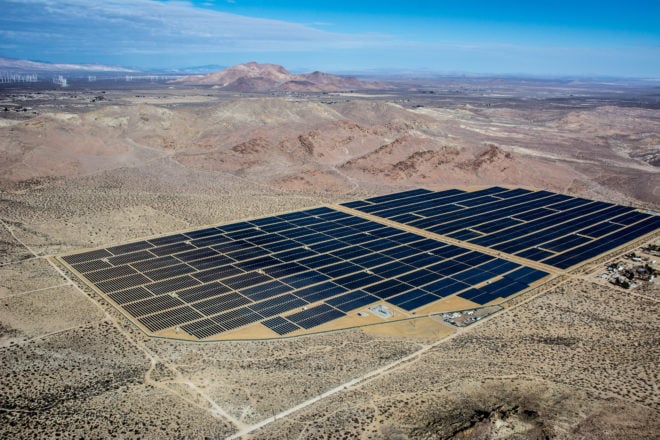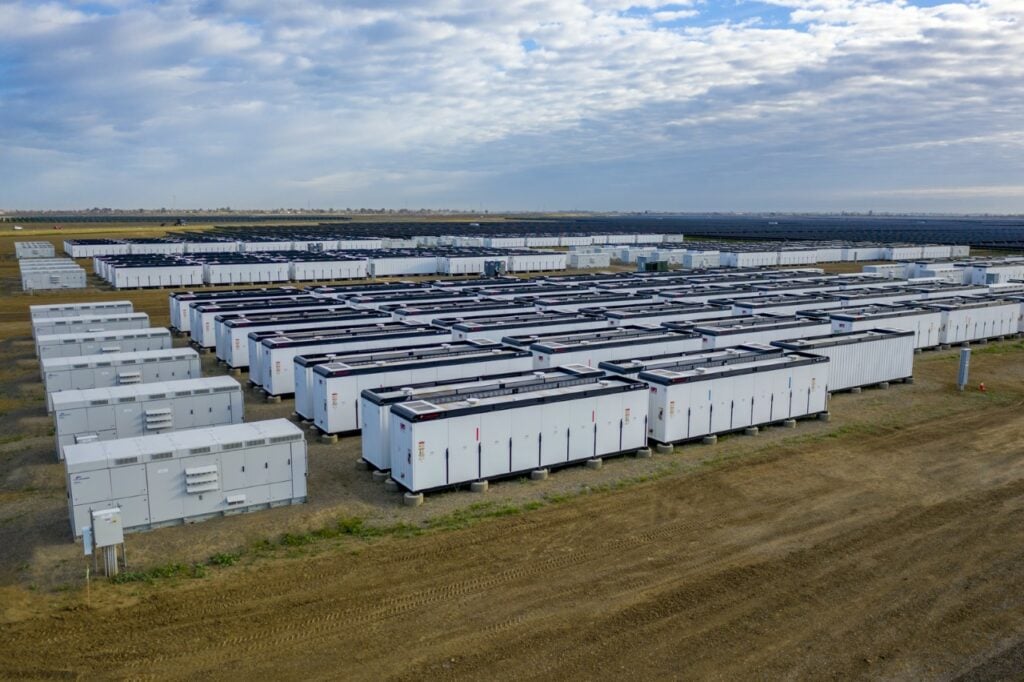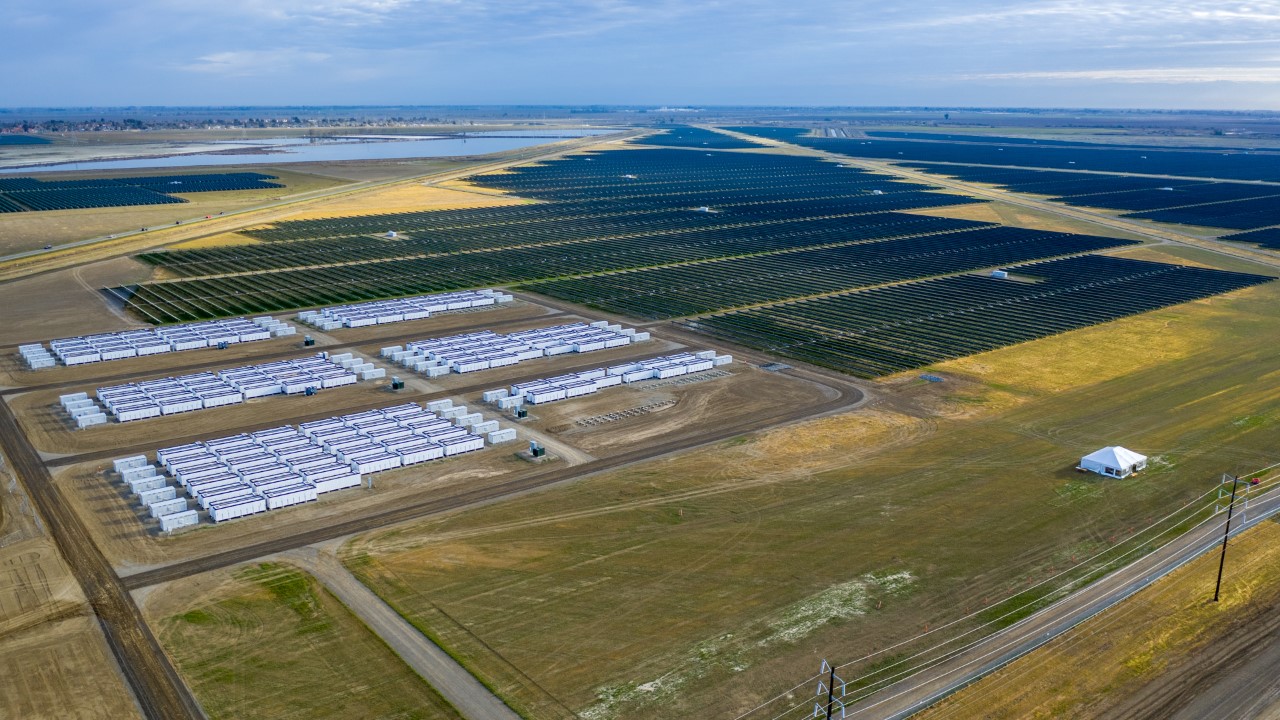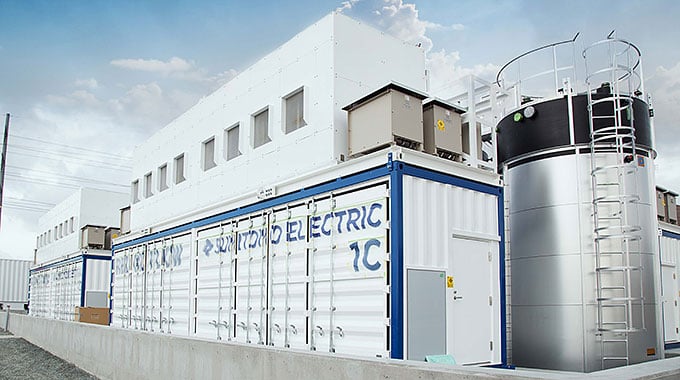
Lucas Moller, head of energy storage development at Recurrent Energy, discusses the rise of solar-plus-storage in the US: where the market has come from and where it’s heading.
Around 60% of new solar PV projects planned for deployment in US utility service areas over the next two years are hybrid resources paired with storage.
Enjoy 12 months of exclusive analysis
- Regular insight and analysis of the industry’s biggest developments
- In-depth interviews with the industry’s leading figures
- Annual digital subscription to the PV Tech Power journal
- Discounts on Solar Media’s portfolio of events, in-person and virtual
That’s equivalent to about 6GW and growing all the time. Although a clear majority of this new capacity will be clustered in the leading regional markets for solar, like California or Arizona, it’s increasingly becoming a national phenomenon.
For context, Wood Mackenzie Power & Renewables said in recent research that a total 3GW of utility-scale energy storage came online during 2021 in the US, so it’s clear batteries paired with solar will be a significant complement to standalone battery storage in terms of new additions.
Particularly in areas like the desert Southwest in Southern California, Arizona or Nevada, it makes more sense to add battery storage to large-scale solar than to not, Lucas Moller, head of energy storage development at Recurrent Energy says.
Moller was one of the contributors to our recent feature article for PV Tech Power, where representatives of technology providers and developers active in the US solar-plus-storage market ranging from community and distributed scale to grid-scale shared their experiences and insights.
To read that article, which also includes conversations with folks from IHI TerraSun, Stem Inc and Nexamp, subscribe to the quarterly journal here (or read an extract on the site here).
Today, we discuss the solar-plus-storage market with Lucas Moller in more detail. Recurrent Energy’s parent company Canadian Solar said in its quarterly financial results release a couple of weeks ago that it now has a pipeline of nearly 27GWh of energy storage project opportunities, of which 15.5GWh are in North America.
That’s in addition to 1,400MWh already in construction in the region, and a significant portion will be hybridised with solar.
All of Recurrent’s solar-plus-storage projects executed to date are in California, including Slate, which paired 300MW of PV with 140.25MW/561MWh of battery storage and went online earlier this year.
However, he explains, that’s perhaps more to do with California’s solar market reaching maturity earlier than other places, rather than California being some unique outlier. Recurrent Energy looks at all solar projects as potentially also energy storage projects, because that’s how it’s projects in California began their development cycle as early as 2014.
“We look at all solar projects as solar-plus-storage projects, and as it pertains to California, and I’d say, the Desert Southwest [in general], there’s no such thing as a solar-only project anymore,” he says.
“There is pretty much a fundamental need to add storage to every project to make it economically viable.”
“It is directly associated with the degree of solar penetration. The reference, of course, for everyone is the Duck Curve, which is fundamentally driving value in energy shifting. That is creating necessity for storage.
“But further than that, it’s saying, any marginal solar that comes online needs to effectively ameliorate the very low or sometimes negative value of midday energy and so we don’t want to create a new plant that is primarily going to be stranded out there injecting low value power in the middle of the day if it’s a standalone PV asset.”
“For the buyers in these markets, whether it’s a regulated market like Arizona or an open market in California, the value of that midday energy is so low in every marginal megawatt of renewable power that you buy new plants, you want it to be associated with the ability to shift and not be exposed to that low value in the middle of the day.”
What California does have are contracts for resource adequacy (RA), which has led to a lot of four-hour duration battery storage coming online. How does resource adequacy fit into the business model for battery storage?
Four hours of battery storage, gets you resource adequacy value in the California market. It serves as a similar concept in some of the regulated markets in the western interconnect as well.
What this means is that load serving entities, whether that’s investor-owned utilities (IOUs), community choice aggregators (CCAs) etc, they need to provide a certain amount of resource adequacy to cover their load plus a planning reserve margin of 15% – 17.5%.
What that means is a lot of storage projects today — it is primarily true of standalone but it is also very true of retrofits at solar plants — were in fact primarily driven by the value of [resilience] paired to the energy shifting value alone.


It’s quite a step up to see solar PV being considered regulatorily as a capacity resource isn’t it?
For sure. And I will say that in a place where there is high midday demand, solar does provide capacity value. The problem is when that solar generation source exceeds that midday demand, or nearly exceeds that midday demand, that’s when the effective value of that capacity resource drops.
So instead of being a static capacity resource, it turns into a dynamic capacity resource to adapt to that shifting peak, when you add storage.
It’s interesting that RA can be covered by four-hour duration battery storage, which was long considered the upper limit for lithium-ion battery energy storage system (BESS) technology in terms of cost-effectiveness. However, we’ve started to see six and even eight-hour lithium battery projects get underway in California through clean energy supply contracts. How much is the selected duration of projects a function of RA?
The four-hour standard is really driven by the resource adequacy qualification.
While there is value for sure in shifting four hours between zero-priced energy in the middle of the day to US$60 to US$80-priced energy in the evening ramp, that market value doesn’t necessarily underwrite a four-hour duration [BESS].
When you look into the operational math in California, it may be something like two or three-hour duration is ‘economically optimal’ from a markets perspective. It’s again the RA requirement and the fact that you get paid for this service separately out of market that’s driving four hours.
If you go to other markets outside of California, some are using a similar standard, some are looking at a little bit more complex math through effective load carrying capability support, kind of a more dynamic view of how much duration equals capacity value.
But in short, depending on the cost benefit of what that capacity value is in a given market versus how much it’s going to cost you in terms of building out an extra hour of lithium-ion battery capacity, it’s an ongoing question and debate, and certainly with battery prices being volatile — but increasing in the recent short term — it becomes a question of: ‘what is economic even with a capacity price?’
In California, we’re going to build a lot of lithium-ion batteries, probably even out to eight hours of duration and that’s partly because, from a policy perspective, California has decided against adding new gas-fired capacity and is rather going to rely upon that new resource adequacy coming primarily from energy storage resources.
In terms of longer duration projects how much interest is Recurrent Energy taking in long-duration energy storage (LDES) technologies, which might be alternatives to lithium-ion at eight hours or more discharge time?
We’ve definitely looked at long duration, both from a fundamental technology perspective of what is out there and how it competes or squares up against lithium-ion.
What are the pros and cons? And every technology has its nuances.
What Recurrent has seen – and is validated by some recent procurements – is that lithium-ion is more economical up to eight hours. I think once you get beyond eight hours, it may be a little bit more of a question, particularly given current market prices [for lithium].
But those flow batteries and other technologies out there often have high costs for their initial scale. Many of them do promise, or expect to have, cost declines over some time, but their cost declines cannot start until they reach scale.
So there’s a little bit of a Catch 22 until they start really developing or the market starts out for multiple long-duration projects, particularly very long-duration, in excess of eight hours, where these things are going to start to make more economic sense.
To be specific, I am referring in part to a couple of recent long-duration energy storage RFP awards made to some other developers in California. There’s also been an award for a vanadium redox flow battery (VRFB) resource, but in general, the CCAs that are awarding these projects have seen that lithium-ion is cheaper.
One last point on this is that these are not necessarily economic decisions to purchase these PPAs for long-duration systems. They’re in part driven by California policy mandates for a certain amount of long-duration energy storage to be added.
California is a major focal point for solar-plus-storage today, but among Recurrent’s other developments is Hummingbird, a project in Kentucky which is anticipated to include 200MWac solar PV and up to 200MW/800MWh of battery storage. Its targeted online date is by the end of 2024, but Kentucky’s perhaps not somewhere people immediately think of as a booming state for solar-plus-storage. How different are the economics of solar-plus-storage there as opposed to California?
To be clear, there’s a lot of competition in Kentucky. It’s not to say there are a lot of projects built, but there are a lot of people trying to build projects in Kentucky.
There are a couple of reasons for that. On the solar side, it’s actually got pretty decent sun and it’s in PJM Interconnection, or parts of it are, where there is an extreme demand for renewable generation. Not to get too into the weeds in PJM mechanics, but it’s common knowledge these days that that market has really slowed their interconnection advancement process.
So the supply is far short of the demand for new renewables. Not just solar, but also wind generation. That’s markets-driven, whether that’s renewable portfolio standards (RPS) and/or corporate procurement goals.
As it pertains to solar-plus-storage, we see, again, planning for the future, an opportunity in these markets. As that demand does get met, we’ll see a much higher penetration of solar resources in PJM over time, again, creating that kind of fundamental value for storage on the market side and then as a capacity resource as well.
PJM has been making headway as to how storage can be valued for as a capacity resource, especially around that four-hour mark. Those two things are good leading indicators for the opportunity, apart from just the pure demand for new solar PPAs.

Where else in the US do you foresee Recurrent and others in the market being busy in the next few years?
Solar demand is high in PJM, it continues to be high in ERCOT (in Texas), there’s a lot of projects that are waiting to come online in ERCOT and there’s various supply chain and interconnection timelines to work through for the entire industry right now.
But there’s a lot of pent-up demand for new PV in these markets. Again, a lot of it is driven by corporate procurements that are kind of mission driven.
PJM and ERCOT are the big ones in the US, apart from California, which is almost a given, but we are seeing increasing demand pretty much everywhere in the US.
Despite some supply chain constraints, leading to slightly higher prices, and even in less greatly sunny areas, there is a demand for reliable, price consistent power.
As we see fossil retirements happening throughout the country. There’s a natural replacement with these reliable low-cost renewables. As those come to fruition and get built out, we see storage, basically following suit, right behind, to help provide that capacity value and provide that energy shifting value.
Finally, there is so much solar-plus-storage in the US, particularly as it is eligible for investment tax credit (ITC) support, whereas standalone energy storage is not. Is there ever a sense – perhaps if that ITC eligibility changes – that standalone energy storage and solar-plus-storage might be in competition with one another for market share?
I don’t really see either cannibalising one or the other.
In particular though, standalone energy storage has a difference in locational value as well. You’re going to put standalone storage batteries in places you can’t put hundreds of acres of PV panels, so it has a different market value and different value to the grid for reliability specific to certain areas.

